Make this homemade pasta dough recipe with just flour and eggs. A small-batch version that's easy to roll and shape into fettuccine, tagliatelle, or any fresh pasta.
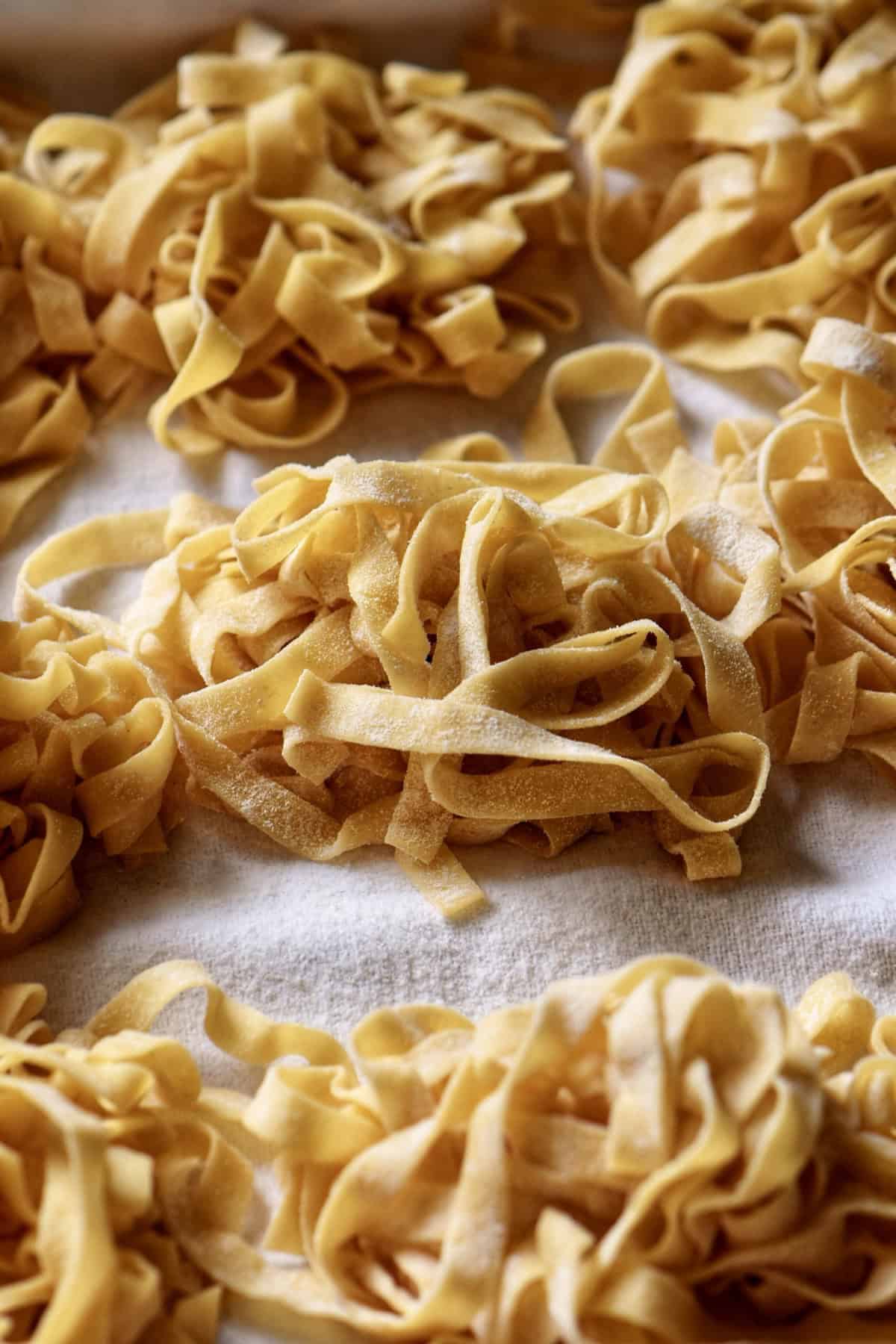
Growing up in an Italian household, I learned how to make homemade pasta dough by watching my nonna's hands at work. She'd create silky, restaurant-quality noodles using nothing more than flour and eggs - no special equipment, no complicated steps.
Now that my husband and I are empty nesters, we've rediscovered the joy of making fresh egg pasta at home. Small batches like this are simple, satisfying, and turn even an ordinary weeknight into something special.
This classic pasta dough recipe for two takes less than 15 minutes of active work and delivers tender, homemade pasta every time. If you've never made it before, you're about to see why this timeless method has been passed down through generations - and why you may never want to go back to the boxed kind.
Because when it comes to fresh pasta, the difference isn't just flavor - it's texture you can feel with every bite.
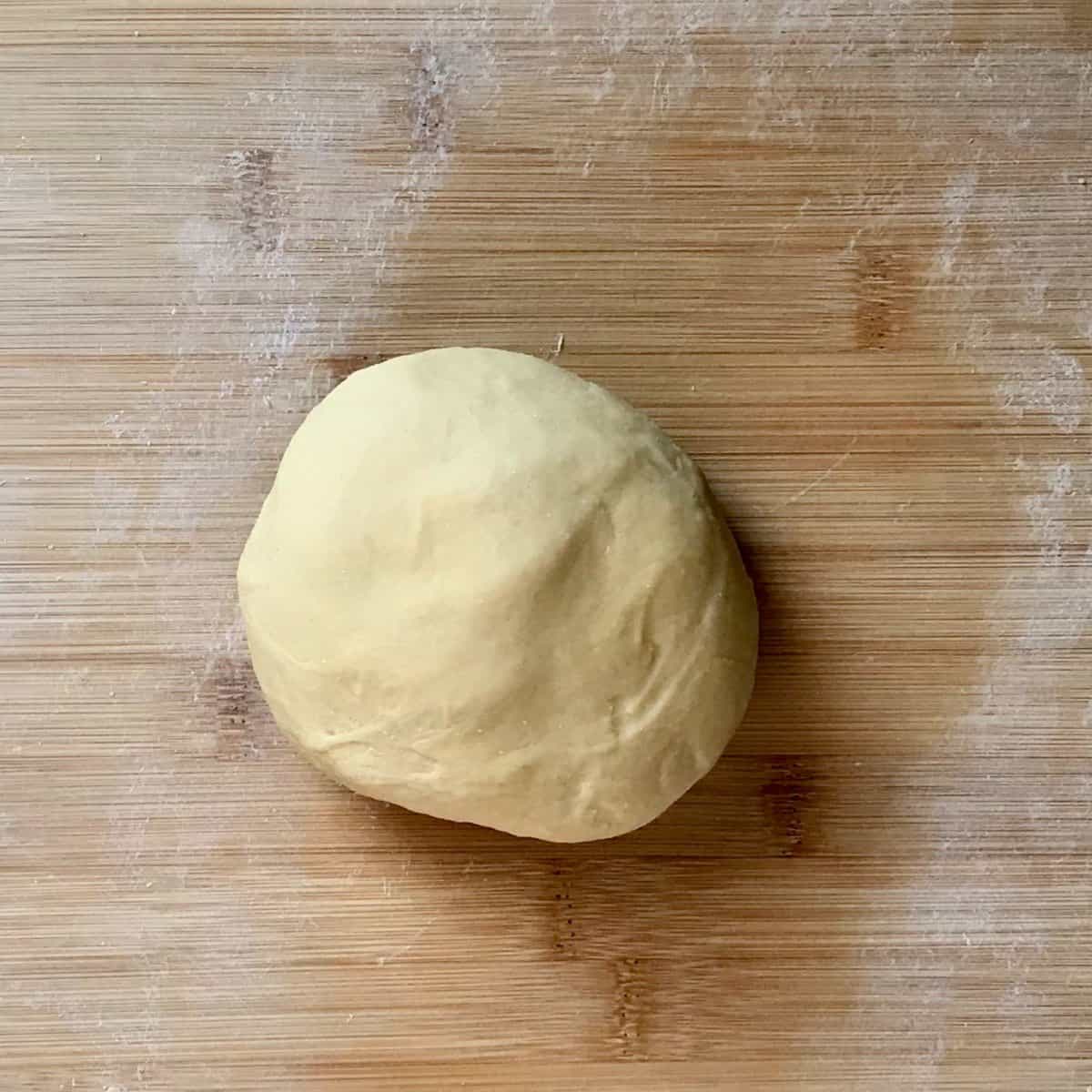
Jump to:
Quick Overview
- Prep Time: 15 minutes (plus 30 minutes resting time)
- Cook Time: 2-3 minutes
- Total Time: 45 minutes
- Yield: Serves 2
- Serving Suggestions: Shape into tagliatelle, fettuccine, or lasagna sheets. Toss with your favorite sauce, from a quick tomato sauce to a rich butter and sage.
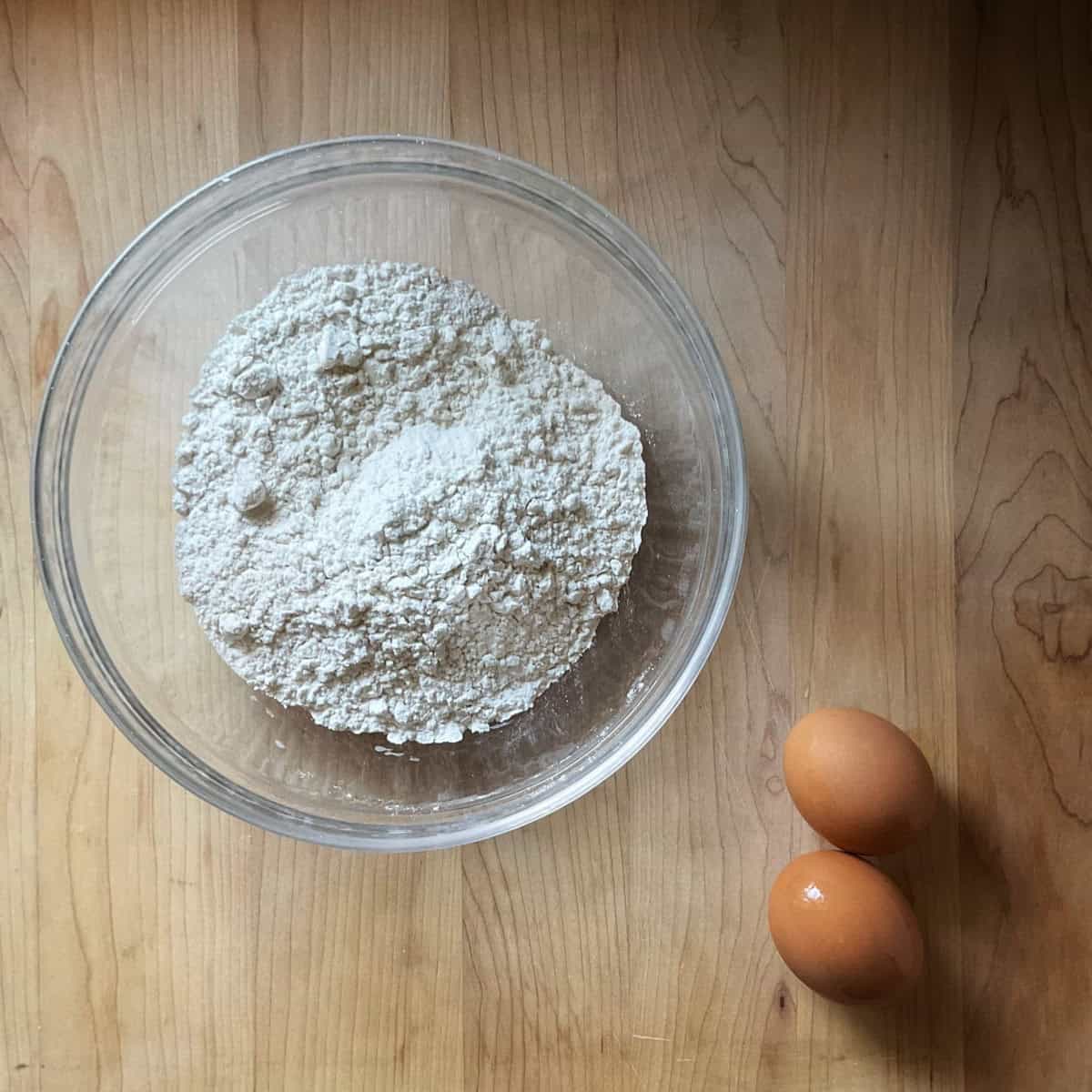
Ingredients
You only need two simple ingredients to make this pasta dough recipe-flour and eggs. I like to use all-purpose flour. It provides for a soft, tender dough and is easy to work with. If you prefer a silkier texture, consider using "00" flour. Room temperature eggs provide richness and help bind everything together.
How to Make Fresh Pasta Dough
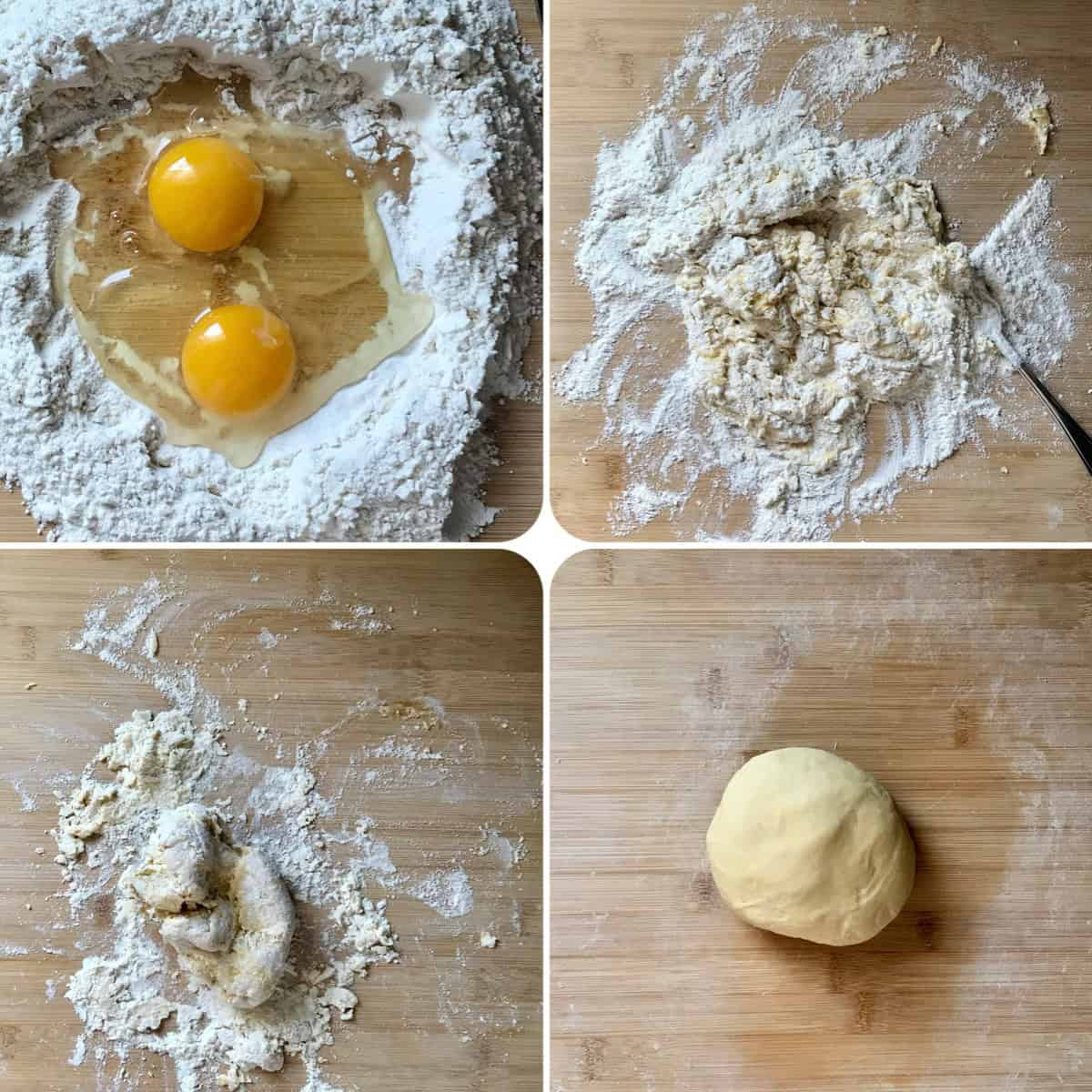
- Measure out 200 g (about 1 ⅓ cups) of flour, but hold back a tablespoon or two-you can always add it later if the dough feels too sticky. This little trick helps balance humidity and egg size, which can vary. Make a well in the center of the remaining flour right on your counter (or in a large bowl) and crack in 2 room-temperature eggs. Using a fork, start whisking the eggs while slowly pulling in a bit of flour at a time until the mixture starts to come together into a rough dough.
- Once the mixture comes together, use your hands to knead it into a ball. Don't worry if it looks a little shaggy or uneven at first - that's completely normal. Keep kneading until the dough feels smooth, elastic, and slightly firm, about 8-10 minutes.
- When your homemade pasta dough feels soft but holds its shape, wrap it tightly in plastic wrap or cover it with a bowl. Let it rest for at least 30 minutes. This resting time allows the gluten to relax, which makes the dough easier to roll and gives your pasta that tender, silky texture.
- The dough should feel soft but hold its shape when you poke it gently.
- You can roll the dough by hand with a rolling pin or run it through a pasta machine - both methods work beautifully. Take your time, enjoy the process, and before you know it, you'll have fresh pasta ready to cut, shape, and cook.
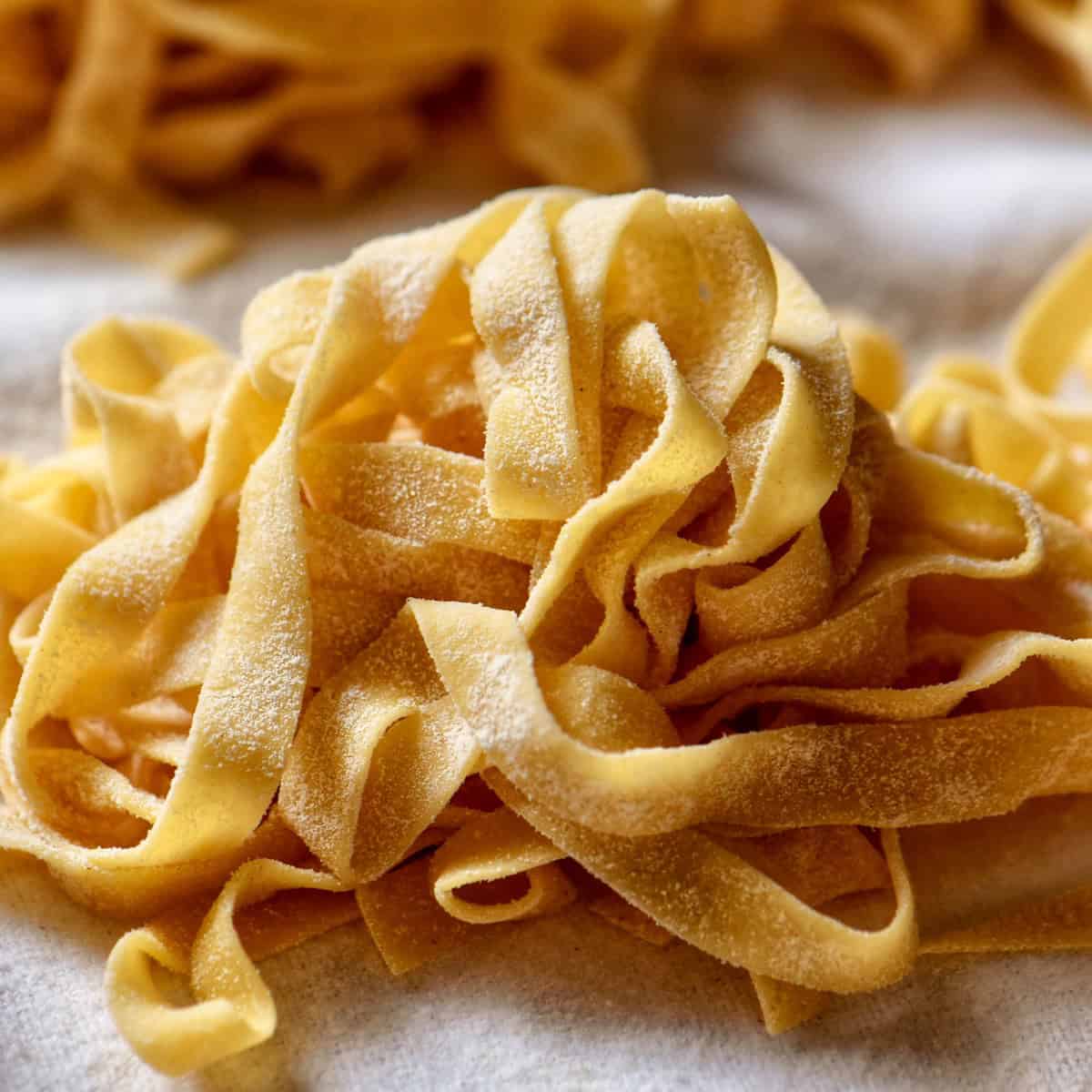
I often make fettuccine for a simple weeknight dinner, but this dough works beautifully for any pasta style.
What Should Pasta Dough Look Like at Each Stage?
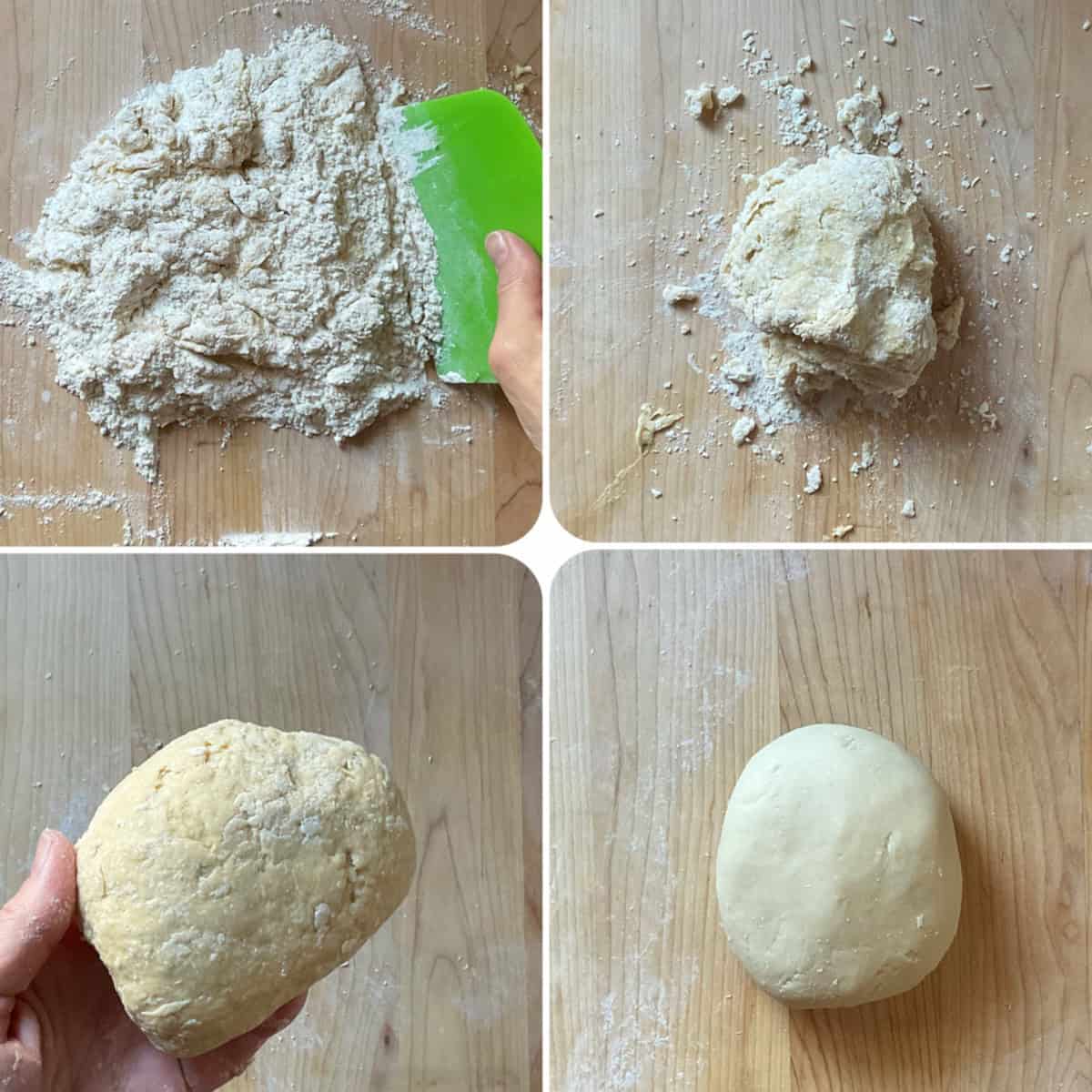
- Stage 1: Initial Mixing (First 2-3 minutes)
The mixture will look like coarse, shaggy crumbs-almost like wet sand with some larger clumps. Don’t panic if it looks messy! That's exactly how it should be. The dough won’t hold together yet. Once the fork can't do much more, I like to switch to a dough scraper-it helps bring everything together and keeps the counter a little cleaner as the dough starts to form. - Stage 2: Coming Together (after 3-5 minutes of kneading)
You'll notice the shaggy bits start forming a rough ball. It might feel a bit uneven or slightly sticky in spots. The surface won’t be smooth-this is normal and expected. - Stage 3: Smoothing Out (around 5-8 minutes)
Now the dough starts to relax and smooth out. It feels firmer, but still soft and elastic-kind of like a stress ball. If you press it gently, it should bounce back slowly. - Stage 4: Fully Kneaded (8-10 minutes)
The dough is smooth and supple, elastic, and slightly tacky (not sticky). When you poke it, it springs back nicely. It should feel soft and flexible.
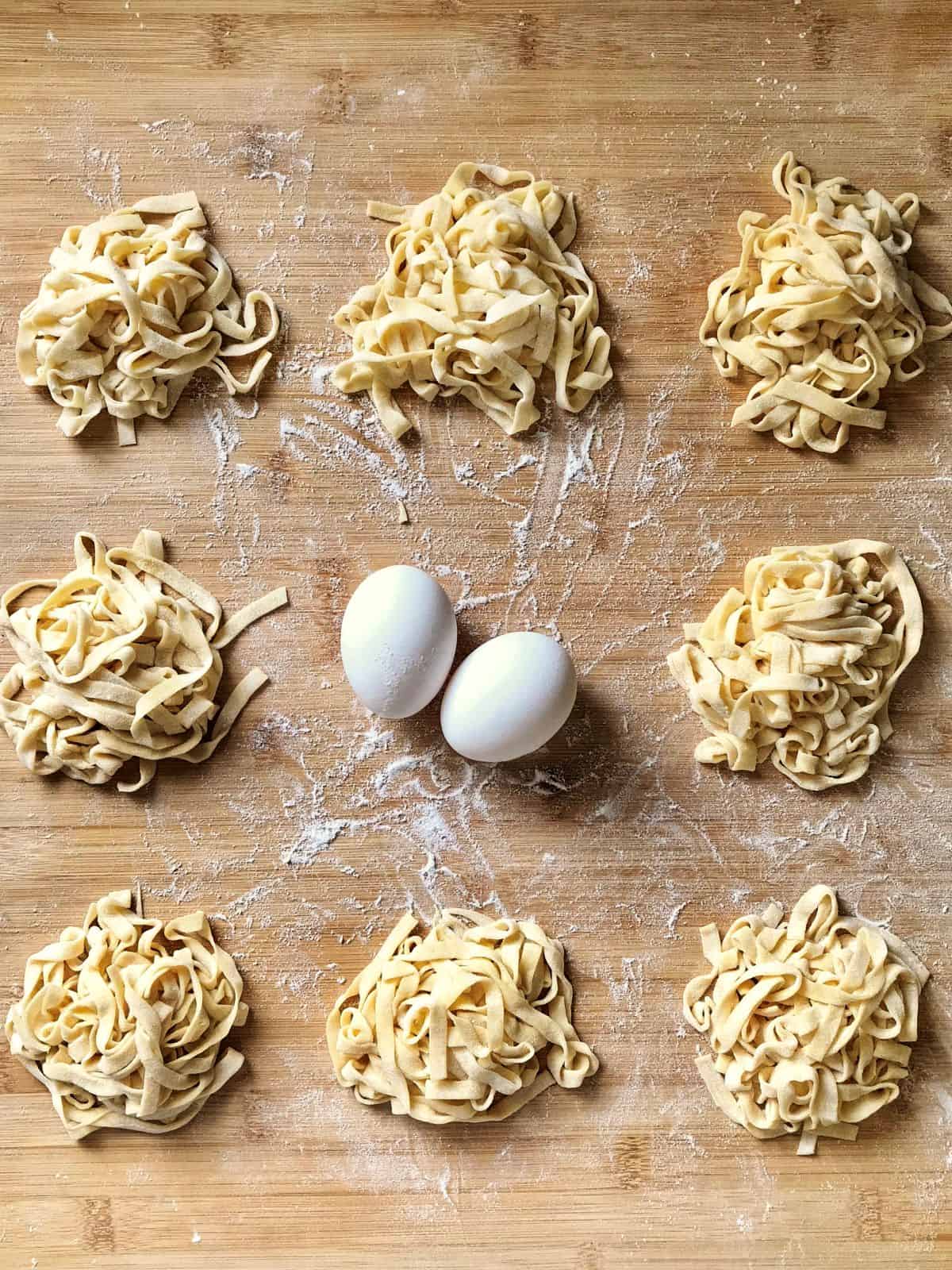
Tips for Perfect Pasta Dough Every Time
- If your dough feels too wet, sprinkle in a little flour at a time and keep kneading until it comes together. If it's too dry, lightly wet your hands or add a few drops of water, then knead again. If it feels tough or springy, let it rest longer - up to an hour will help it relax.
- Use room-temperature eggs for easier mixing. Cold eggs make the dough harder to form. On humid days, you may need a touch more flour, so trust the feel of the dough rather than exact measurements.
- At first, skip the extra flour on your work surface - that slight stickiness actually helps the dough form. Once it's smooth and ready to roll, dust the surface lightly to prevent sticking.
- A well-kneaded dough should feel soft but not sticky - like your earlobe. Stretch a small piece between your fingers. If you can see light through it without tearing, it's ready.
- Don't skip the resting time. Thirty minutes is the minimum, but up to two hours gives even better results. If you plan to rest the dough longer than an hour, refrigerate it and bring it back to room temperature before rolling.
- If the dough tears easily, it needs more rest. If it shrinks back while rolling, cover and let it sit for another 10-15 minutes before trying again.
FAQ
Both all-purpose and "00" flour work well. "00" flour creates a smooth, silky texture, while all-purpose flour gives a slightly firmer bite. You can even mix the two for great results.
If your dough feels dry, add a few drops of water until it comes together. If it's sticky, sprinkle with a little extra flour as you knead. The dough should feel soft but not tacky.
Absolutely. Use a rolling pin to flatten the dough as thin as possible, dusting with flour to prevent sticking. Then roll and cut by hand into your desired shape.
Fresh pasta cooks very quickly-usually 2 to 3 minutes in boiling salted water. It's ready when it floats to the surface and still feels slightly firm to the bite.
Yes! Wrap the dough well and freeze for up to a month. For cut pasta, freeze the strands on a tray, then transfer to a container once solid. Cook directly from frozen-no need to thaw.
More Homemade Pasta Recipes to Try
Recipe Origins
Like many traditional recipes, this pasta dough recipe follows the classic ratio of flour to eggs that's been used for generations in Italian kitchens.
Over time, I've seen-and tried-many variations: different flours, extra egg yolks for richness, even a touch of olive oil for softness.
What truly matters is finding the balance and texture that work best for you. There's no right or wrong way to make fresh pasta-it's all about preference and a little bit of practice.
THANKS SO MUCH for following and being part of the She Loves Biscotti community, where you will find Simple & Tasty Family-Friendly Recipes with an Italian Twist.
Ciao for now,
Maria
Recipe
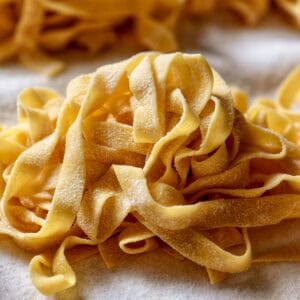
Fresh Homemade Pasta Dough Recipe
WANT TO SAVE THIS RECIPE?
Ingredients
- 200 grams all purpose flour 1 ⅓ cups
- 2 eggs room temperature
Instructions
- Start by measuring out 200 g (about 1 ⅓ cups) of flour-but set aside 1 to 2 tablespoons for later. This gives you flexibility to adjust for humidity or egg size as you mix.
- Form a well with the remaining flour directly on your counter or in a large bowl.
- Add the room-temperature eggs to the center.
- Using a fork or a sturdy wooden spoon, combine until a shaggy ball forms. Pull in the flour from the bottom of the well.
- With the help of a dough scraper, incorporate the rest of the flour (it may appear to you that there isn't enough moisture…just keep kneading…magically everything comes together).
- Knead for about 10 minutes or until the dough is smooth and elastic. If the dough feels sticky, add a little bit of the reserved flour. If, on the other hand, the dough feels dry, sprinkle a few drops of water over the dough and continue kneading.
- Wrap the dough in cling wrap and let it rest for about 30 minutes at room temperature (I will usually place a tea towel over the top).
- You can now roll the dough by hand with a rolling pin or run it through a pasta machine to create your homemade pasta - both methods work beautifully.
Notes
- If your dough feels too wet, sprinkle in a little flour at a time and keep kneading until it comes together. If it's too dry, lightly wet your hands or add a few drops of water, then knead again. If it feels tough or springy, let it rest longer - up to an hour will help it relax.
- Use room-temperature eggs for easier mixing. Cold eggs make the dough harder to form. On humid days, you may need a touch more flour, so trust the feel of the dough rather than exact measurements.
- At first, skip the extra flour on your work surface - that slight stickiness actually helps the dough form. Once it's smooth and ready to roll, dust the surface lightly to prevent sticking.
- A well-kneaded dough should feel soft but not sticky - like your earlobe. Stretch a small piece between your fingers. If you can see light through it without tearing, it's ready.
- Don't skip the resting time. Thirty minutes is the minimum, but up to two hours gives even better results. If you plan to rest the dough longer than an hour, refrigerate it and bring it back to room temperature before rolling.
- If the dough tears easily, it needs more rest. If it shrinks back while rolling, cover and let it sit for another 10-15 minutes before trying again.
Nutrition



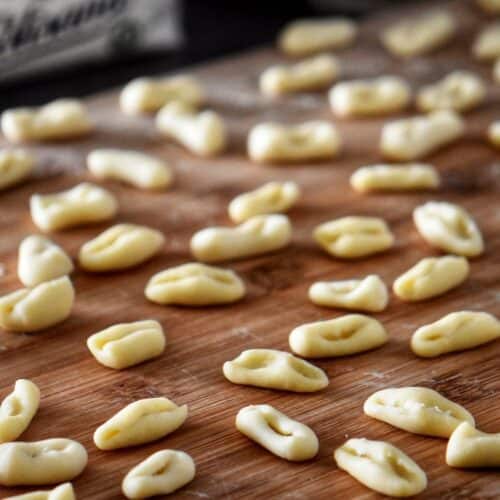
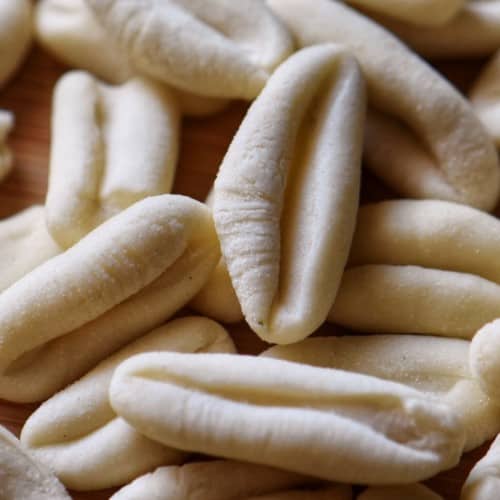
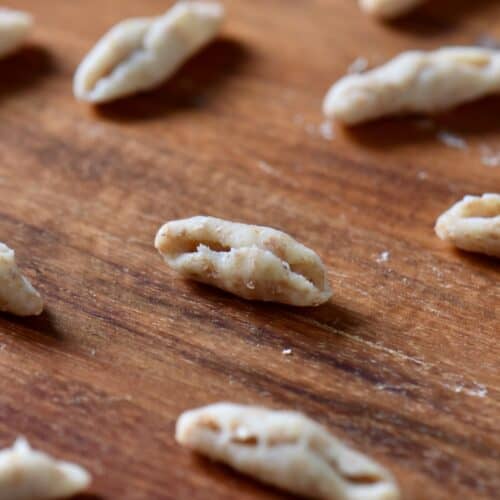
Elia DiBattista
That’s exactly how my mom taught me.
Very simple and always fantastic.
Keep up the great recipes Maria
Maria
Thank you so much Elia ❤️
Val
Wow, just 2 ingredients. Can’t wait to try this. Thanks Maria!
Maria
Enjoy Val!
Anne Catalfamo
I’m going to give it a try!
Maria
How wonderful Anne! Enjoy!